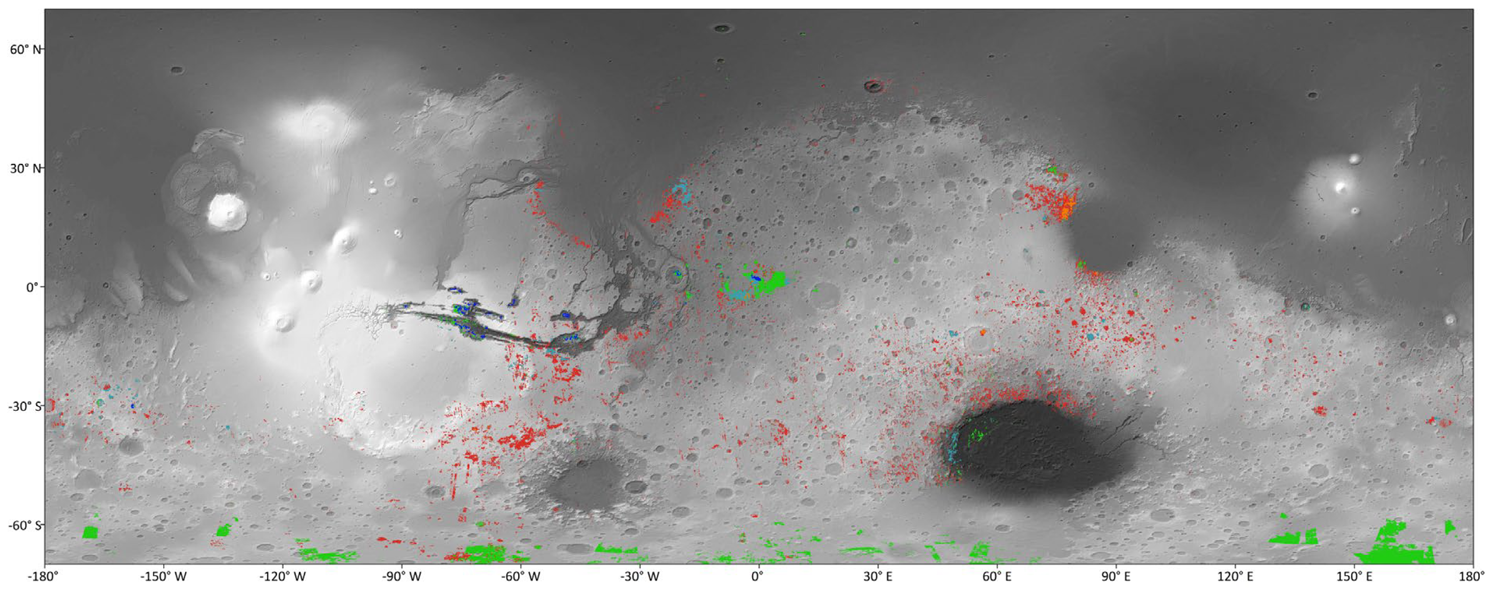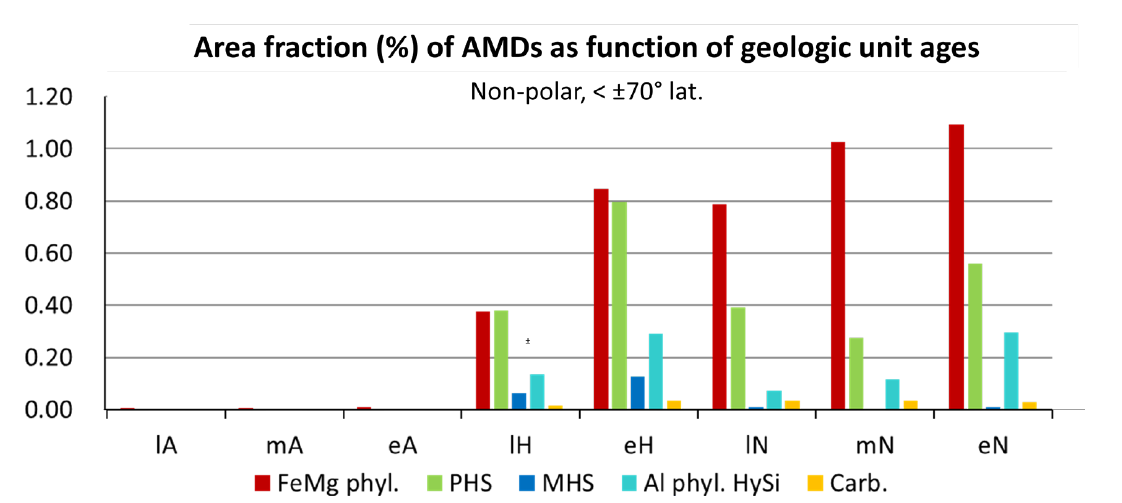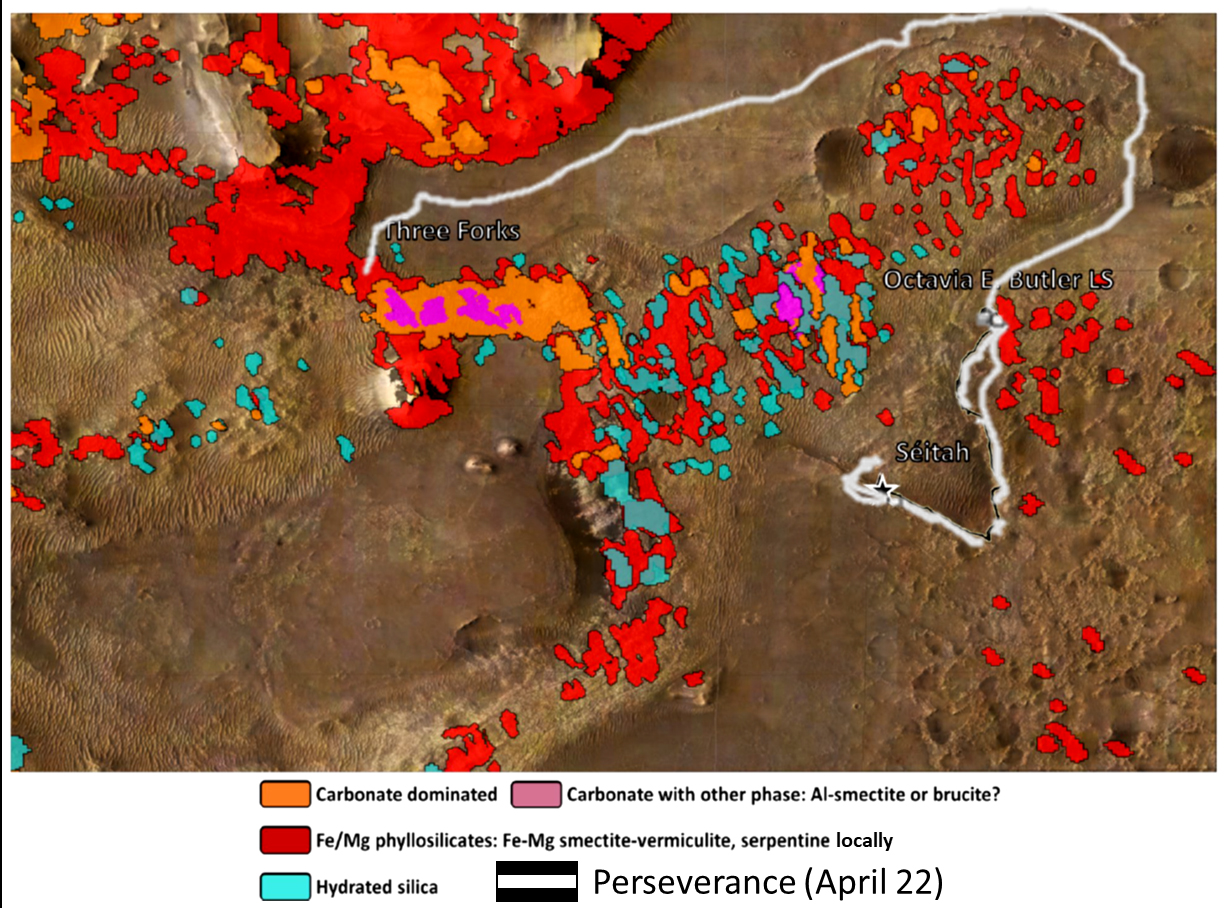Global distribution of Mars aqueous alteration minerals from orbit: the MOCAAS project
- 1IAS, CNRS / Paris-Saclay University, Orsay, France (john.carter@ias.u-psud.fr)
- 2LAM, CNRS / Aix-Marseille University, Marseille, France
- 3ESA-ESAC, Madrid, Spain
Aqueous alteration minerals are high-value scientific targets and potential resources for future exploration. In particular, they are key drivers in the selection of contemporary and upcoming landing sites at Mars. Here we report on the “MOCAAS” (Mars Orbital Catalog of Aqueous Alteration Signatures) project, a 10-year endeavor which built a comprehensive high-resolution repository of aqueous minerals on Mars. Our project goals include: 1) providing a statistically meaningful global approach to aqueous minerals, 2) providing regional mineralogical context to better understand specific sites of interest, 3) identifying new high-science merit aqueous alteration mineral deposits, including as prospective landing sites, 4) providing groundwork for upcoming quantification work on the global inventory of volatiles sequestered in such minerals. A corollary are identifying sites which abundant aqueous alteration minerals provide ISRU opportunities for future human exploration.
We will present the first global-scale analyses of our detection sample, our benchmark of the methodology on rover landing sites, and discuss limitations, biases and perspectives.
We processed a large fraction of the OMEGA/Mars Express and CRISM/MRO datasets [Bibring+04; Murchie+07] which both allow retrieval of Mars surface reflectance in the [1.1-2.65] µm range used in this study. Their processing is described in [Carter+22] and yields aqueous alteration mineral detection (AMD) all over Mars. An AMD is a cluster of (nearly) contiguous pixels which we ascertained to contain similar spectral rationale for one or several aqueous minerals, to the sensibility limit of orbital near-infrared spectroscopy and observation spatial sampling. We combine several approaches that are systematic and semi-automatic as well as more refined manual investigations of individual observations from OMEGA and CRISM. Only confirmed AMDs are retained in the end which spectral content has been visually validated. We then further classify AMDs into 5 spectral-mineral classes: 1) Fe/Mg phyllosilicate clay, 2) Hydrous aluminosilicates and hydrated silica, 3) Poly/Semi-hydrated sulfate salts, 4) Mono-hydrated sulfate salts, and 5) Carbonates. These classes account for degeneracies in the diagnostic spectral features which cannot always be uniquely attributed to a given alteration mineral.
Excluding polar latitudes, a large fraction of the Mars surface mineralogy has been surveyed at a sampling down to 200 m/pixel (>62% of the surface) using semi-automatic algorithms, and its near entirety at kilometric resolution. Candidate AMDs were then further investigated in detail at all resolutions. The total fraction of AMDs reported at Mars is ~1%, yet this fraction includes many terrains that exhibit surface dust, poor observational conditions, and are younger than the late Hesperian. Figure 1 provides the global distribution color-coding for spectral mineral classes which is seen to strongly correlate with the oldest, dust-poor terrains of Mars.

Figure 1: Distribution of aqueous alteration mineral detections based on the OMEGA and CRISM datasets. Each color codes for the spectral mineral classes (Red: Fe/Mg phyllosilicates; Green-blue: sulfate salts; Orange: carbonates; Cyan: aluminosilicates or hydrated silica). Each color pixel here indicates that alteration minerals are present within a 4x4km² area.
Preliminary analyses of the global distribution of aqueous alteration minerals will be presented, investigating distribution as a function of latitude, altitude, unit type and unit age. An example histogram of the distribution of aqueous minerals as a function of unit age is shown in Figure 2. In particular, we report the much more widespread occurrence of several types of aqueous minerals throughout the Noachian highlands of Mars compared to what was previously known.

Figure 2: preliminary statistics on the distribution of alteration minerals, as a function of their unit-age from [Tanaka+14].
Our detection capability is then benchmarked by implementing the same mapping procedure but applied to well-studied candidate or current landing sites for rover missions: at Gale crater, Jezero Crater, Mawrth Vallis plateaus and Oxia Planum. For these, we generate local high resolution maps, for which an example is given at Jezero crater below.

Figure 3: High resolution aqueous alteration mineral mapping of the surroundings of Mars 2020 in Jezero crater.
We will discuss perspectives for both global analyses of aqueous minerals made possible by this catalogue (e.g. [Riu+22]), as well as regarding future studies of newly identified sites of interest for which we will present a sample.
In the near-term, the MOCAAS catalogue of aqueous alteration minerals will be made available on the PSUP portal (psup.ias.u-psud.fr) as well as through a dedicated web portal.
References: [Bibring+04] J.-P. Bibring et al., ESA Spec. Pub, 2004, https://ui.adsabs.harvard.edu/abs/2004ESASP1240...37B; [Murchie+07] S. Murchie et al., JGR, 2007, 10.1029/2006JE002682 ; [Carter+22] J. Carter et al., Icarus, under revision ; [Tanaka+14] K. Tanaka et al., 2014, http://pubs.er.usgs.gov/publication/sim3292 ; [Riu+22] L. Riu et al., this conference.
How to cite: Carter, J., Riu, L., Poulet, F., Bibring, J.-P., Langevin, Y., and Gondet, B.: Global distribution of Mars aqueous alteration minerals from orbit: the MOCAAS project, Europlanet Science Congress 2022, Granada, Spain, 18–23 Sep 2022, EPSC2022-185, https://doi.org/10.5194/epsc2022-185, 2022.

